This month we acknowledge September as National Cholesterol Education Month. According to the Centers for Disease Control and Prevention, nearly 1 in 3 Americans have high cholesterol. So what better time is there to discuss fats and cholesterol inside our bodies and in our food? In this month’s blog, we’ll cover everything fat-related, how it affects your cholesterol, and that not all fat is necessarily bad fat.
Good vs. bad cholesterol
Your total cholesterol and other fats in your blood are essential for certain body processes like producing vitamin D and making bile acids so that your stomach can digest the food you consume. Cholesterol travels to your cells via carriers called lipoproteins. The total cholesterol in a blood test measures the blood cholesterol in all the lipoproteins combined.
Bad cholesterol consists of low density lipoproteins, also known as LDL. These low-density lipoprotein carriers transport cholesterol from the liver to other parts of the body. When LDL is deposited within walls of your arteries, it can cause major health problems. These cholesterol deposits form plaque which blocks blood vessels and eventually causes major damage to your arteries which can result in a heart attack or stroke.
“Good” cholesterol is comprised of HDL which helps carry cholesterol from the body tissues back to the liver where it can be properly expelled from the body. Individuals who have high levels of HDL can better reduce the cholesterol content of body tissues.
Different types of fats
Fats are in all kinds of foods we consume from meat and dairy products to nuts and oils we use for cooking. Although we may not pay much attention to them, these fats have an effect on our overall health and take a toll on our good (HDL) and bad (LDL) cholesterol.
Triglycerides are the most common type of fat found in the body. Triglycerides come from unused calories that are stored in fat cells for later. There is an increased risk of heart disease, heart attack, and stroke in those who have high levels of triglycerides combined with low HDL cholesterol or high LDL cholesterol. Those who have high triglyceride levels could potentially have a condition called hypertriglyceridemia which can lead to pancreatitis or further hardening of the arteries.
Saturated fats contain a high number of fatty acid molecules with single bonds. This type of fat is found in a number of foods like chicken, fatty meat, butter, and cheese. It’s also found in popular cooking oils like palm and coconut oil. Saturated fats have a tendency to look solid at room temperature. Consuming too many saturated fats daily can increase one’s bad cholesterol (LDL) and increase the risk of heart disease.
Trans fat is another way of saying trans-fatty acid. Trans fat is a type of unsaturated fat that became popular to use in the 1950s in the form of margarine. Trans fats mostly come from processed foods like fried foods, pre baked cakes and pastries, and other prepackaged items. Trans fats also have a tendency to increase our bad cholesterol (LDL) and lower our good cholesterol (HDL).
Unsaturated fats include monounsaturated and polyunsaturated Avocados also contain beneficial amounts of potassium, fiber, and phytosterols which help maintain a healthy level of cholesterol absorption within the gut. Polyunsaturated fats are found in things like nuts, fish, some shellfish, and sunflower oil.
Along with staying physically active, one should also try to replace saturated fats with unsaturated fats. This does not mean you need to omit saturated fats or trans fats altogether, but you should limit their intake and eat a well-balanced diet of fruits, vegetables, dairy, protein, and whole grains. By following these dietary guidelines, you can raise your good cholesterol level and live a healthier overall lifestyle.
Some foods recommended by the American Heart Association include:
- Skinless poultry prepped the healthy way can provide adequate protein without trans and saturated fat added into your diet.
- Unfried fatty fish like salmon offer a ton of omega-3 fatty acids, which lower heart rate and blood pressure.
- Nuts and legumes like peanuts, pecans, walnuts, and pistachios offer prime sources of some vitamins and mineral as well as serving as a healthy fat.
- By using or cooking with non-tropical vegetable oils like canola, corn, safflower, and soybean oils, you decrease your use of trans and saturated fats found in heavier oils like coconut and palm oil.
- Low-fat dairy products like fat free or skim milk, or dairy foods with less than 1% milk fat
- Fruits without any added sauce or salt can be a good source of vitamins and minerals. Consuming portioned amounts of antioxidant rich berries like blueberries and strawberries or oranges full of vitamin C can counterbalance the effects of sodium, which can lower your cholesterol. Be careful with fruits though, as they have high amounts in sugar.
- Fill your plate with leafy dark green vegetables like spinach and kale as they contain an omega-3 fatty acid called alpha-linolenic acid as well as a number of essential vitamins and minerals.
When making a plate for yourself, be sure to watch your portions and sodium level. Adding too much salt to an otherwise healthy meal can have the opposite effects you might be looking for. In conjunction with the sodium rule, overloading on a ton of foods with healthy fats can lead to an increase in daily caloric intake.
What else can I do?
If you are someone who worries about having high cholesterol, you might need to take another look at your exercise regime. Remember that having too much plaque buildup can be a result of a high fat diet as well as a lack of physical activity. Even for those who have excess weight, taking part in some activity is better than none at all. Before committing to a gym membership, take a moment to sit and write down where you are in your fitness level and what you would like to achieve. Set out a schedule for yourself and plan on sticking to a set workout routine on certain days. You will want to make sure you divide your time working out based on cardiovascular and strength training 3-5 times a week for about 30 minutes per session. You can always get professional help from a licensed trainer if you feel you truly need it.
Cardiovascular exercises
- Running outside or on a treadmill is a classic activity that gets the heart pumping. Be sure that you follow a pace that is comfortable yet challenging. Wear proper footwear and stretch a bit before you begin your workout to avoid any serious injuries.
- Walking can be a good cardiovascular exercise that is easy on the joints and feet. Brisk walking is an effective method of maintaining a good weight and lowering cholesterol.
- Cycling is a wonderful form of cardiovascular exercise for those who are looking for a suitable alternative to running or walking.
Methods of strength training
- Weight lifting, when done properly to avoid injuries, can be a great way to build muscle and remain strong using simple and affordable tools like dumbbells and medicine balls.
- Resistance training using your own body weight can be extremely effective for strengthening muscles. Some examples include wall sits, push-ups, pull-ups, sit-ups, and squats.






